
Helpful Link

Top Sallers
-
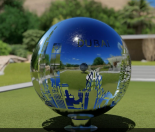 customize stainless steel...
customize stainless steel...
-
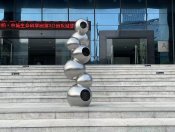 brush sphere ball sculptu...
brush sphere ball sculptu...
-
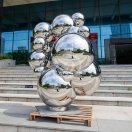 Stainless steel sphere s...
Stainless steel sphere s...
-
 1600mm stainless steel sp...
1600mm stainless steel sp...
-
 Large outdoor corten stee...
Large outdoor corten stee...
-
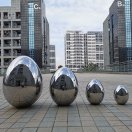 304 stainless steel oval ...
304 stainless steel oval ...
-
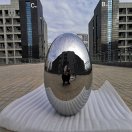 Amazing Art 304 Stainless...
Amazing Art 304 Stainless...
-
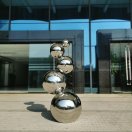 Customize Unique life Siz...
Customize Unique life Siz...
-
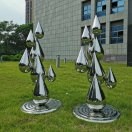 Water Droplets Shape Stai...
Water Droplets Shape Stai...
-
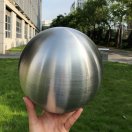 20cm 200mm 304 Stainless ...
20cm 200mm 304 Stainless ...
-
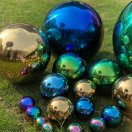 Colored Plated Hollow Gaz...
Colored Plated Hollow Gaz...
-
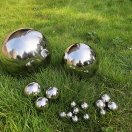 20mm 30mm 50mm 100mm Holl...
20mm 30mm 50mm 100mm Holl...
-
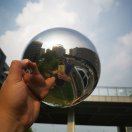 200mm 300mm 400mm Mirror ...
200mm 300mm 400mm Mirror ...
-
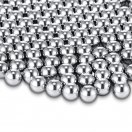 Paint Nail Polish Mixing ...
Paint Nail Polish Mixing ...
-
 100mm 200mm 300mm 400mm S...
100mm 200mm 300mm 400mm S...
-
 150mm200mm 250mm 300mm Ma...
150mm200mm 250mm 300mm Ma...

Inquire


Mao Ping Industrial Co,. limited
liao maoping
Tel: +86 (755)88847072
Fax: +86(755)61104122
E-mail:liaomaoping@hotmail.com
whatsapp:l+86 13824307586

Home >News> New Detail New Detail
Top 40 American Sculptors
Top 40 American Sculptors A Personal View • Augustus Saint-Gaudens (1848-1907) One of the foremost American sculptors of the late 19th century. He trained in Paris and Rome (1867-72 and later), but made his reputation with his famous Farragut Monument (1881, Central Park, New York). • Daniel Chester French (1850-1931) New Hampshire-born sculptor, he created the George Washington statue, presented to France by the Daughters of the American Revolution; the General Grant statue in Philadelphia, and the General Joseph Hooker sculpture in Boston. Founding member of the National Sculpture Society. Key work: Statue of Lincoln (1922) stone, Lincoln Memorial, Washington DC. WORLD'S BEST SCULPTORS For a list of the top 100 3-D artists (500 BCE - 2009), please see: Greatest Sculptors. AMERICAN ART For more information about fine arts in America, see: American Art (1750-present). • Gutzon Borglum (1867-1941) American sculptor born in Idaho, studied in Paris, created statues of the 12 Apostles for St John's Cathedral New York, and a 6-ton marble head of Abraham Lincoln for the US Capitol. Key work: Presidential Portraits (1941) natural rock, Mount Rushmore, South Dakota; featuring Presidents Washington, Jefferson, Lincoln and Theodore Roosevelt. • Gertrude Vanderbilt Whitney (1875-1942) American sculptor born in New York, studied in Paris, noted for her Washington Heights War Memorial, New York (1921), and her sublime Women's Titanic Memorial (1931) at Fort McNair, Washington DC. But best remembered as the founder of the Whitney Museum of American Art. • James Earle Fraser (1876-1953) Minnesota-born sculptor, took classes at the Art Institute of Chicago, also studied in Paris with American sculptor Augustus Saint-Gaudens; became famous for portraits of American historical figures. Key work: End of the Trail (1915) bronze, Brookgreen Gardens, Murrells Inlet, USA. • Anna Hyatt Huntington (1876-1973) Born in Massachusetts, she was one of the great masters of naturalistic animal sculpture, notably equestrian statues. A member of the National Academy of Design and the National Sculpture Society, she founded America's first sculpture garden, Brookgreen Gardens. Key work: Fighting Stallions (1950) Hyatt Huntingdon Sculpture Garden, Brookgreen Gardens, S. Carolina. • Gertrude Vanderbilt Whitney (1877-1942) New York-born sculptress, the daughter of Cornelius II Vanderbilt, she trained at the Art Students League and in Paris (she knew Rodin). She won a number of important commissions for commemorative statues. An important figure in modern art in the USA, she later founded The Whitney Museum of American Art. Key work: Women's Titanic Memorial (1931) stone, Fort McNair, Washington DC. • Elie Nadelman (1882-1946) A Polish-born artist who is said to have influenced Picasso in Paris, he created graceful works, often in wood or metal, with a simple, elegant charm, reminiscent of folk art. He also worked in marble, plaster and papier-mâché, glazed ceramic, and other media. He married a wealthy widow and became famous for his "high-society" sculptures. Key work: Man in the Open Air (c.1915) bronze, Museum of Modern Art, New York City. • Georgia O'Keeffe (1887-1986) Born in Wisconsin, she excelled in drawing and watercolours as well as sculpture. Interested in the underlying abstract form of objects, rather than their naturalistic portrayal. Married the New York art dealer Alfred Stieglitz (1864-1946), who hosted her first solo exhibition in 1917. Key work: Abstraction (1946) cast aluminium, Georgia O'Keeffe Museum, Santa Fe. • Man Ray (Emmanuel Radnitszky) (1890-1976) American painter, photographer, film-maker and sculptor, born in Philadelphia and a lifelong friend of Marcel Duchamp with whom he founded the Societe Anonyme in 1920. Was an active member of Dada and Surrealism, and his "objects" works were an important contribution to modern sculpture. Key work: Gift (1921) iron, MoMA New York. • Alexander Calder (1898-1976) One of the earliest abstract sculptors, he was born in Pennsylvania, and became best known as the inventor of the 'mobile' and the 'stabile' ("line drawings in space"), and thus a pioneer of kinetic art. His father, Alexander Stirling Calder, and grandfather Alexander Milne Calder were also sculptors. Won numerous awards and a host of commissions. Friends with many great modernists like Joan Miro, Jean (Hans) Arp, Marcel Duchamp, Piet Mondrian. Key work: Blue Feather (1948) stabile and mobile, metal/wire, Private Collection. • Louise Nevelson (Louise Berliawsky) (1899-1988) Russian-American sculptor, studied at the Art Students League then under Hans Hofmann. In 1944, three years after a solo show in the Nierendorf Gallery NY, she began producing the abstract wood assemblages which later secured her reputation. In the 1960s she undertook several large open-air sculptures in aluminium and steel. Key work: Sky Cathedral (1958) painted wood, The Museum of Modern Art, New York. Note About Sculpture Appreciation To learn how to evaluate modernist American sculptors, see: How to Appreciate Modern Sculpture. For earlier works, please see: How to Appreciate Sculpture. • James Richmond Barthé (1901-1989) Born in Mississippi, Barthe was one of the first African-Americans to succeed in 20th century sculpture. He sprang to prominence after showing in Chicago and Harlem NY. Thereafter he moved to Jamaica, Italy then Spain, Switzerland and lastly California. Noted for his Toussaint Monument in Port-au-Prince, Haiti, his smaller sculptures appear in several museums such as the Metropolitan Museum in New York, the Whitney Museum of Art, and the Art Institute of Chicago. Key work: Feral Benga (1935) bronze, Museum of Fine Arts, Houston. • Joseph Cornell (1903-72) Self-taught, reclusive sculptor, born in New York state, he was a pioneer and famous exponent of assemblage art. Participated in the Fantastic Art, Dada and Surrealism show at MoMA in 1936, showing his signature works - boxes displaying collections of nostalgic items, often irreverently juxtaposed. Key work: Navigation Series Box (1952) multi-media, Private Collection. • Barnett Newman (1905-70) Born in New York city and best-known as a co-founder of Colour Field Painting, he started sculpting in the 1960s, producing metallic shafts echoing the vertical stripes of his paintings. A lifelong anarchist, never prepared to accept state handouts, he tended to appear in photographs dressed in a suit and bow-tie. Key work: Broken Obelisk (1969) Cor-Ten steel, Museum of Modern Art, New York. [Note: Cor-Ten steel is a proprietary brand of self-weathering, corrosion-resistant steel employed by a number of contemporary sculptors working on outdoor commissions.] • Burgoyne Diller (1906-65) Grew up in Michigan, influenced by Cubism before settling on Mondrian's and De Stijl's form of geometric abstraction. Overlooked by art critics almost until his death, he was eventually seen as one of the great abstract sculptors of the mid-20th century. Key work: Second Theme (1949) Metropolitan Museum of Art. • David Smith (1906-1965) Indiana-born sculptor, he learned metal-welding working in the car industry before training at the Art Students' League. Met other American artists like Arshile Gorky, Stuart Davis and De Kooning, was strongly influenced by African art and Picasso's welded metal sculptures. After World War II, championed by the influential critic Clement Greenberg (1909-94), Smith became the most highly-regarded American sculptor of the time. Key work: Hudson River Landscape (1951) painted steel, Whitney Museum American Art. • Louise Bourgeois (1911-2010) French-born American sculptor, friend of refugee European Surrealists Joan Miro and Andre Masson, best known for her explicit surrealist and feminist works, as well as her monumental spider sculptures. Key work: Maman (1999) bronze, National Gallery of Canada, Ottawa. • Tony Smith (1912-1981) Architect and sculptor, born in New Jersey, studied at the Art Students League and the Chicago Bauhaus, became associated with the Abstract Expressionists but didn't exhibit until the age of 52. Today he is represented in several important US public collections of sculpture. His most famous work is Die (1962) painted steel, Museum of Modern Art, New York. • Ellsworth Kelly (b.1923) Painter, sculptor and printmaker, born in New York, he is best known as one of the leading exponents of Hard Edge Painting. In his sculptures he employed painted cut-out metal forms similar to those in his paintings. Key work: Sculpture for Large Wall (1957) aluminium, Museum of Modern Art, New York. • George Segal (1924-2000) A chicken-farmer and spare-time painter of expressionist nudes until his late 30s, Segal then found his metier - creating life-size unpainted plaster sculptures combined with real objects, and later, sound/lighting effects. His sculpture is now in numerous museums of American art. Key work: The Diner (1965) multi-media, Walker Art Centre, Minneapolis. • Duane Hanson (1925-96) Famous hyperrealist sculptor, born in Minnesota, trained in Michigan, settled in south Florida. Noted for his life-size photorealist sculptures of mundane individuals typically using polyester resin and fiberglass. His work is often associated with Surrealism and Pop Art. Key work: Young Shopper (1973) polyester/fibreglass, Saatchi Gallery, London. • Robert Rauschenberg (1925-2008) Famous Neo-Dada painter and sculptor, graduate of Kansas City Art Institute and Black Mountain College. Best known for his 'combines' (combined painting/collage/sculpture) or assemblages. Key work: Monogram (1955-9) stuffed painted goat, rubber tyre, Museum of Modernist Art Stockholm. • John Chamberlain (b.1927) Born in Indiana, trained at the Chicago Art Institute school and Black Mountain College. Influenced by David Smith, he is - like the French sculptor Cesar Baldaccini - famous for sculptures made entirely from crushed, twisted and crumpled automobile parts. He has also worked with urethane foam. Key work: Untitled (1960) sheet metal, National Gallery of Modern Art, Rome. • Ed Kienholz (1927-94) Washington-born sculptor noted for his satirical, voyeuristic, life-size three-dimensional sculptures and installation art. Noted works include: Back Seat Dodge '38 (1964) multi-media, LACMA, Los Angeles; Portable War Memorial (1968) Museum Ludwig, Cologne. Designed his funeral as a piece of Performance Art. • Andy Warhol (1928-87) Leader of the American Pop Art movement, best-known for his celebrity silkscreen portraits, but also produced several avant-garde sculptures of boxes of Brillo soap pads, Heinz ketchup and Campbell's tomato juice. • Donald Judd (1928-94) An iconic figure of American abstract sculpture, he began his career as an art critic on Arts Magazine. Turned to sculpture in the early 1960s, employing industrially fabricated metal boxes which became his hallmark. Although his works seems banal, one leading art patron (Charles Saatchi) considers him to be one of the greatest of all contemporary sculptors. Key work: Untitled (Stack) (1967) lacquer on galvanised iron, MoMA, New York. • Arman (1928-2005) French-American sculptor and a former close friend of Yves Klein, he is best known for his contemporary assemblage art, made from household debris, car-parts and other junk. Key works: Home Sweet Home (1960) gasmasks, Georges Pompidou Centre, Paris; Accumulation of Sliced Teapots (1964) Walker Art Center, Minneapolis. • Sol LeWitt (1928-2007) American sculptor, graphic artist and art theorist, born in Connecticut, he is famous for his skeletal-like geometric abstract minimalist sculptures, known as 'structures', and for his writings on Conceptual Art. Represented in most public collections of contemporary sculpture in the United States. Key work: Open Geometric Structure IV (1990) Painted wood, Lisson Gallery, London. • Claes Oldenburg (b.1929) Swedish-born Pop-Art sculptor, studied art at Yale University and the Chicago Art Institute. Best known for his monumental sculptures of popular consumerist images (food, cigarette, baseball glove, lipstick), using new materials like foam-rubber. Key work: Floor Burger (1962) Canvas, Foam Rubber and Cardboard, Gallery of Ontario. • Charles Frasier (b.1930) American Pop-artist sculptor known for his satirical images of instantly recognizable consumer objects. Key work: American Nude (1963) bronze, Kornblee Private Collection. • Jasper Johns (b.1930) American painter, sculptor and printmaker, born in Georgia. Became famous in 1958 after a successful one-man exhibition at the New York gallery of the famous art dealer Leo Castelli. He is best known for his 2-D and 3-D images of mundane objects (flags, beer cans). Key work: Ale Cans (1964) Oil on Bronze, Offentliche Kunstsammlung, Basel. • Lee Bontecou (b.1931) Rhode Island-born sculptor and printmaker, won a Fulbright Fellowship to study in Rome. Started with bronzes before settling on assemblages made from canvas/tarpaulin untidily fixed to a support, and other imaginative arrangements. Key work: Untitled (1961) multi-media, Museum of Modern Art, New York. • Robert Morris (b.1931) Born in Kansas City, began paintng in San Francisco before taking a masters in Art History (Brancusi) at Hunter College, New York. Turning then to sculpture, he became one of the leader exponents of Minimalism. Key work: Untitled (Felt Tangle) (1967) felt & metal, Hamburg Kunsthalle. • Mark Di Suvero (b.1933) Highly regarded American contemporary sculptor, born in Shanghai, trained at California School of Fine Arts. His early sculpture comprised assemblages made from junk, and his LA Peace Tower. In 1971, he spent 4 years in Europe, where he began producing monumental outdoor structures. Responsible for a huge number of public sculptures throughout the United States. Key work: Storm Angel (1973-4) Iron, Square Chabas, Chalon-sur-Saone. • Dan Flavin (1933-96) Contemporary New York sculptor best known for his Minimalist works using fluorescent light. key work: Monument for Vladimir Tatlin (1975), Georges Pompidou Centre, Paris. • Carl Andre (b.1935) Trained at the Phillips Academy, Massachusetts; his signature style of Minimalist sculpture was influenced by by the great megalithic monument of Stonehenge, and by his experience of working on the railways. Best known for his ordered linear format and grid format sculptures. Key work: Lead Square (1969) lead, Museum of Modern Art, New York. • Walter De Maria (b.1935) American contemporary Minimalist sculptor, conceptualist and land artist, best known for his use of simple geometric shapes and industrial materials (stainless steel/aluminum). His work "Cage", created for the famous American avant-garde artist John Cage, appeared in the seminal 1966 exhibition Primary Structures, at the Jewish Museum in New York. He was also involved in Land art projects in New Mexico and Arizona. Key work: Cage II (1965) Stainless steel, MoMA New York. • Eva Hesse (1936-70) German-American painter and sculptor, trained in New York then at Yale under Josef Albers. Turned to sculpture in 1964, rapidly achieving notable recognition as an exponent of Eccentric Abstraction, and appearing on the cover of Artforum, shortly before her tragic death from a brain tumour. Key work: Repetition Nineteen III (1968) Fibreglass/resin, MoMA, New York. • Robert Smithson (1938-73) Leading exponent of land art, trained at the Art Students League and the Brooklyn Museum School, he began producing a series of conceptualist artworks (sites and non-sites), before moving on to 3-D works which included the use of soil and earth, and then fully-fledged earthworks in various US states, including Utah and Texas, and in Europe. Married to the land artist Nancy Holt, Smithson was killed in a plane crash. Key work: Broken Circle (1971) water, sand flats, Emmen, Holland. • Richard Serra (b.1939) Born in California, studied at Berkeley, Santa Barbara, and then Yale under Josef Albers, he began creating sculptures using heavy materials - in a form known as Process Art. The sculptor Nancy Graves was his first wife. In the early 1970s he began specializing in gigantic, site-specific commissions, made of steel. Several of his public works have attracted controversy, although his reputation remains high. Key work: Berlin Junction (1987) Steel, Philharmonic Orchestra Building, Berlin. • Judy Chicago (b.1939 Judy Cohen) American painter, sculptor and installation artist, specializing in feminist issues, best known for her contemporary art - notably her popular sculpture The Dinner Party (1974-9, Brooklyn Museum, New York), which has been seen by audiences across the USA. • Bruce Nauman (b.1941) Indiana-born sculptor, installation and video artist, who has also worked with neon lights, known for his creation of "adversary spaces" around his sculptures. Came to prominence after his two one-man shows - at the Los Angeles Nicholas Wilder Gallery in 1966, and the Leo Castelli Gallery in New York, in 1968. In 2006, he was listed by Artfacts.net as the foremost living artist, followed by Gerhard Richter and Robert Rauschenberg. Key work: From Hand to Mouth (1967) wax on cloth, Hirschorn Sculpture Garden, DC. • John De Andrea (b.1941) Born in Denver Colorado, studied art at Colorado University and afterwards at the University of New Mexico. He achieved immediate recognition for his superrealist voyeuristic life-size nudes made out of painted polyvinyl, finished with human hair. His work belongs to the photorealist tradition practised by American sculptor Duane Hanson, and others. Key work: Couple (1971) Acrylic on Polyester, Pompidou Centre, Paris. See also: Female Nudes in Art History. • Jeff Koons (b.1955) Born in Pennsylvania, studied at Maryland Institute of Art, Baltimore and Art Institute of Chicago. Worked as a fund-raiser for the New York Museum of Modern Art, before achieving major acclaim as a contemporary Neo-Pop artist, best known for his gigantic sculptures of banal and/or pop-culture objects such as toys, animals and celebrities, made from unusual, highly coloured materials. Key works include: Popples (1988) porcelain, Hamburg Kunsthalle; Michael Jackson and Bubbles (1988) Porcelain/Gold, Astrup Fearnley Museum of Modern Art; Puppy (1992) flowering plants, steel, wood, earth, Bilbao Guggenheim; and Balloon Dog (1994-2000) stainless steel with colour, Metropolitan Museum of Art New York. Sculpture Collections in America Eminent and interesting public collections of American sculpture can be seen in the following locations: Arizona Phoenix Art Museum California Berkeley Art Museum, University of California at Berkeley Cantor Arts Center at Stanford University, Palo Alto Fine Arts Museum of San Francisco Franklin D. Murphy Sculpture Garden, Hammer Museum, Los Angeles J Paul Getty Museum, Getty Center, Los Angeles Los Angeles County Museum of Art Museum of Contemporary Art, Los Angeles Oakland Museum, Oakland Palm Springs Art Museum, Palm Springs Runnymede Sculpture Farm, Woodside San Diego Museum of Art, San Diego San Francisco Museum of Modern Art Colorado Denver Art Museum, Denver Connecticut Aldrich Museum of Contemporary Art, Ridgefield Yale University Art Gallery, New Haven District of Columbia Hirshhorn Museum and Sculpture Garden, Washington National Gallery of Art, Washington Smithsonian Museum of American Art, Washington Hawaii Honolulu Academy of Arts Illinois Art Institute of Chicago Museum of Contemporary Art, Chicago Nathan Manilow Sculpture Park, University Park Indiana Fort Wayne Museum of Art, Fort Wayne Indiana University Art Museum, Bloomington Indianapolis Museum of Art, Indiana Iowa Des Moines Art Center, Des Moines University of Iowa Museum of Art, Iowa City Kansas Kemper Museum of Contemporary Art, Kansas City Kentucky Speed Art Museum, Louisville University of Kentucky Art Museum, Lexington Louisiana New Orleans Museum of Art Maine Bowdoin College Museum of Art, Brunswick Maryland Baltimore Museum of Art, Baltimore Massachusetts Addison Gallery of American Art, Phillips Academy, Andover Arts on the Point Sculpture Park, Boston DeCordova Museum and Sculpture Park, Lincoln Fogg Art Museum, Cambridge List Visual Arts Center, Cambridge Museum of Fine Arts, Boston Rose Art Museum, Brandeis University, Waltham Smith College Museum of Art, Northampton Williams College Museum of Art, Williamstown Michigan Cranbrook Art Museum, Bloomfield Hills Detroit Institute of Arts Frederik Meijer Gardens and Sculpture Park, Grand Rapids University of Michigan Museum of Art, Ann Arbor Minnesota Franconia Sculpture Park, Franconia Frederick R. Weisman Art Museum, University of Minnesota Walker Art Center, Minneapolis Missouri Laumeier Sculpture Park, St. Louis Nelson-Atkins Museum of Art, Kansas City St. Louis Art Museum, St. Louis Nebraska Sheldon Memorial Art Gallery and Sculpture Garden, University of Nebraska-Lincoln New Hampshire Currier Museum of Art, Manchester Hood Museum of Art, Hanover New Jersey Montclair Art Museum Newark Museum Princeton University Art Museum New York Brooklyn Museum of Art Metropolitan Museum of Art Memorial Art Gallery University of Rochester Munson-Williams-Proctor Arts Institute, Utica Museum of Modern Art (MoMA) Nassau County Museum of Art, Roslyn Harbor Pratt Institute Sculpture Park, Brooklyn Salem Art Works, Salem Solomon R. Guggenheim Museum Storm King Art Center, Mountainville Whitney Museum of American Art North Carolina Museum of American Art, Reynolda House, Winston-Salem North Carolina Museum of Art, Raleigh Weatherspoon Art Museum, Greensboro Ohio Akron Museum of Art Cincinnati Art Museum Cleveland Museum of Art Dayton Art Institute Miami University Art Museum, Oxford Toledo Museum of Art Oklahoma Oklahoma City Museum of Art Oregon Portland Art Museum, Portland Pennsylvania Carnegie Institute, Museum of Art, Pittsburgh Pennsylvania Academy of the Fine Arts, Philadelphia Philadelphia Museum of Art Rhode Island Museum of Art, Providence Texas Buhsnami Sculpture Garden, Burton Dallas Museum of Art, Dallas Janie C. Lee Gallery, Houston Modern Art Museum of Fort Worth Museum of Fine Arts, Houston Nasher Sculpture Center, Dallas Virginia Chrysler Museum of Art, Norfolk Washington Olympic Sculpture Park, Seattle Seattle Art Museum, Seattle Wisconsin Milwaukee Art Museum, Milwaukee| Author | MaoPing | Adding Time | 08/06/2014 | Number | 5293 |


 English
English German
German Spanish
Spanish French
French Italian
Italian Portuguese
Portuguese Japanese
Japanese Korean
Korean Arabic
Arabic Russian
Russian Indonesian
Indonesian Vietnamese
Vietnamese